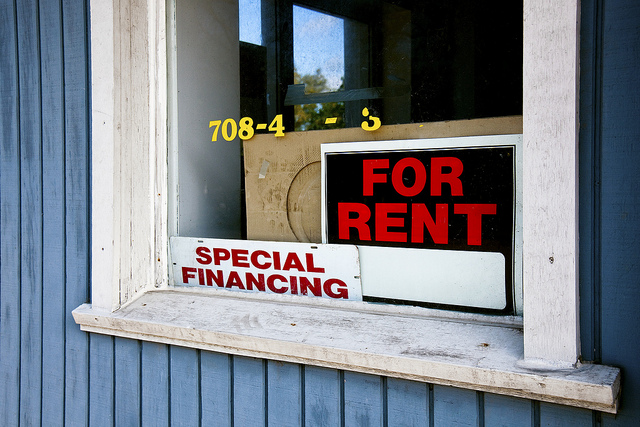The Rent's Been Too Damn High: A Look At Median Rent Prices In Chicago
By Danette Chavez in News on Mar 11, 2015 6:45PM
A recent disclosure of median rent prices in Chicago revealed that there are seemingly plenty of people willing to pay over $1500 monthly for one-bedroom apartments, if it means living in cramped quarters in some Near North mid- or high-rise. Some residents reacted in a "why, I never!" manner towards the news, but if you've been paying attention, you know that this is just more plot development in Chicago's own tale of two cities.
San Francisco-based Zumper, a national real estate site, combed through Chicago rental listings as part of its national rent report; it found that the median one-bedroom rent was $1670. And this was after an almost 3% drop in rental prices in general between January and February of this year. At the national level, Chicago comes in with the ninth highest median rent, which is not too shabby for the third largest city in the country.
A quick look at the Zumper numbers confirms what you might have already guessed: affluent areas like Lakeview saw an increase in rent prices and Lincoln Park rents rank in the top five overall. The Loop, that pet project of Daley past, tied with the Near West Side for the top spot with a median one-bedroom rent of $1960. Rents held steady over the last year in eight of the ten most expensive neighborhoods to live in (well, in a one bedroom).
And how did lower income areas fare? The West Side's Austin (which is the most populated of all Chicago neighborhoods) saw lower median rents over the course of the month, as well as over the year. Chatham (with a median household income of just over $32,000) had the lowest one-bedroom median price at $640. But hey, North Lawndale's median rent jumped up to $720 (perhaps in anticipation of the possible arrival of the Obama Library?).
Only 30 of Chicago's 70+ neighborhoods were included on this list (we'll never know which one lost its spot to the suburb of Evanston), but we'd probably see the same rankings on an all-inclusive list. So, neighborhoods that have been heavily invested in (with both private and public money) appeal to renters and this heightened interest then sends rents soaring? Sounds about right. That's the demand-driven market for you.
The rental data in the city's blighted neighborhoods suggests just as foregone a conclusion: rents remain low because no external forces, real estate or otherwise, are driving up prices (currently). However, that doesn't mean that these areas are a renters' paradise: Chicagoans now spend 31% of their income on rent which, while in line with a financial planner's advice, is still 10% more than the historical average. And a 2013 study on rental housing by DePaul University found that lower-income renters across the board were paying a "higher share of their monthly incomes toward rent."
What's ultimately surprising about the Zumper report isn't the data, but some of our reactions to it. We're seemingly shocked that people will pay $2000 to enjoy lake views from the South Loop, but even if they are spending 30% of their income to live there, they're likely in a better position to do so than someone in Chatham. We're balking at the notion of high-priced rentals even though we've seen this play out before: areas that have been infused with TIF funds flourish and attract new tenants, and popular neighborhoods become pricier neighborhoods and vice versa ad nauseam. Neither the report nor the reporting on it examines what's going on in parts of the city that haven't benefitted from revitalization. But that would be too tough to sum up in a chart that only covered half of Chicago's neighborhoods anyway.
